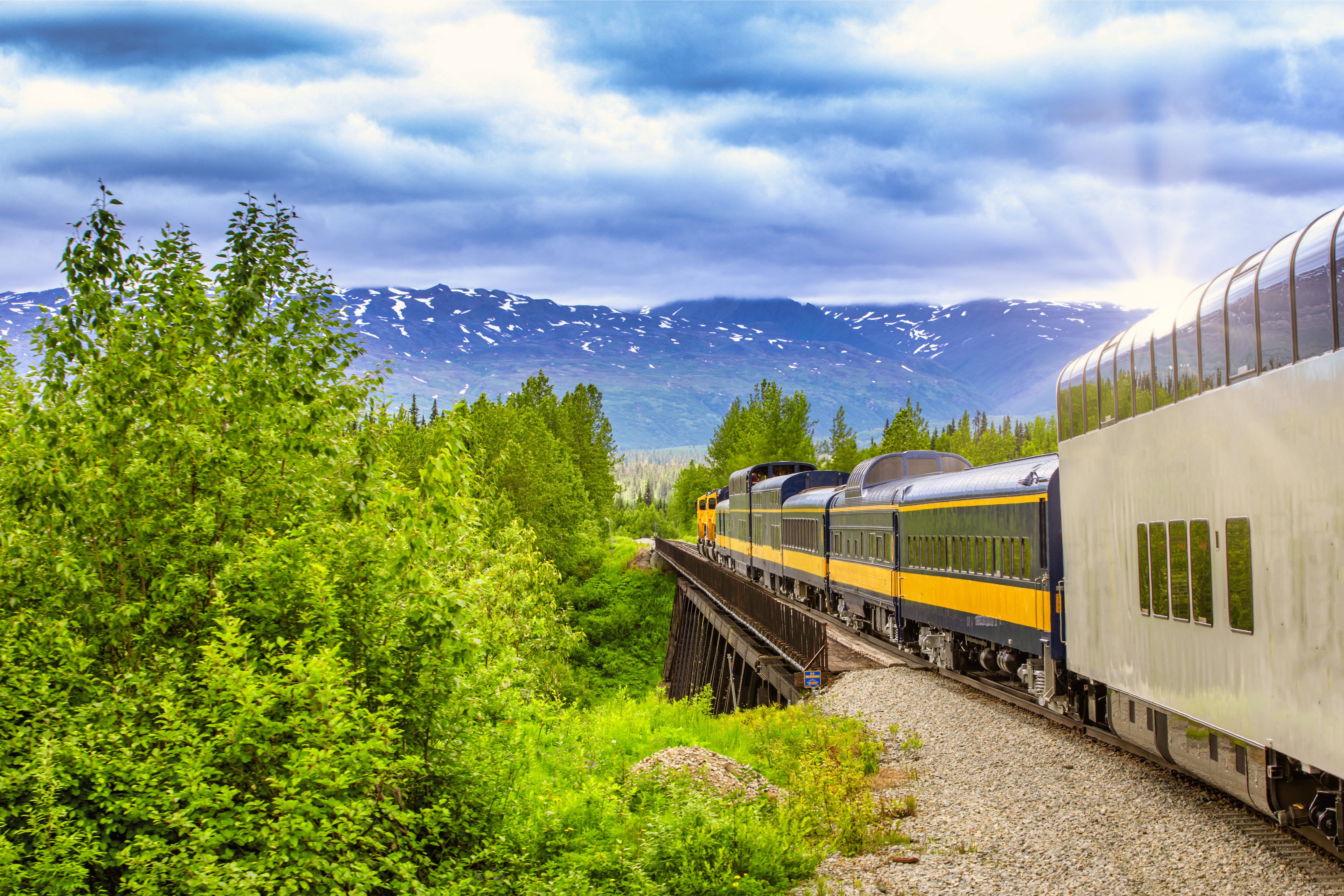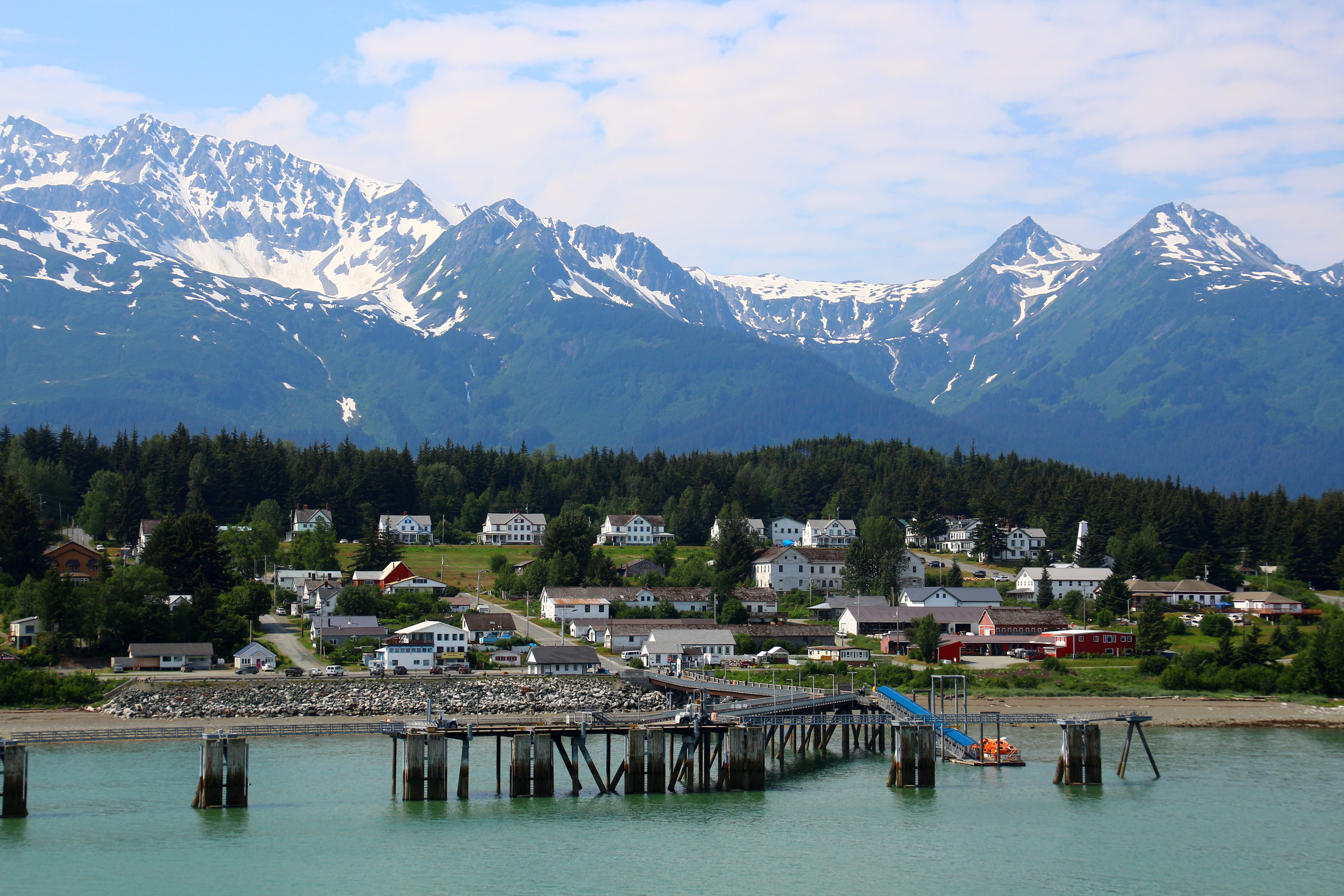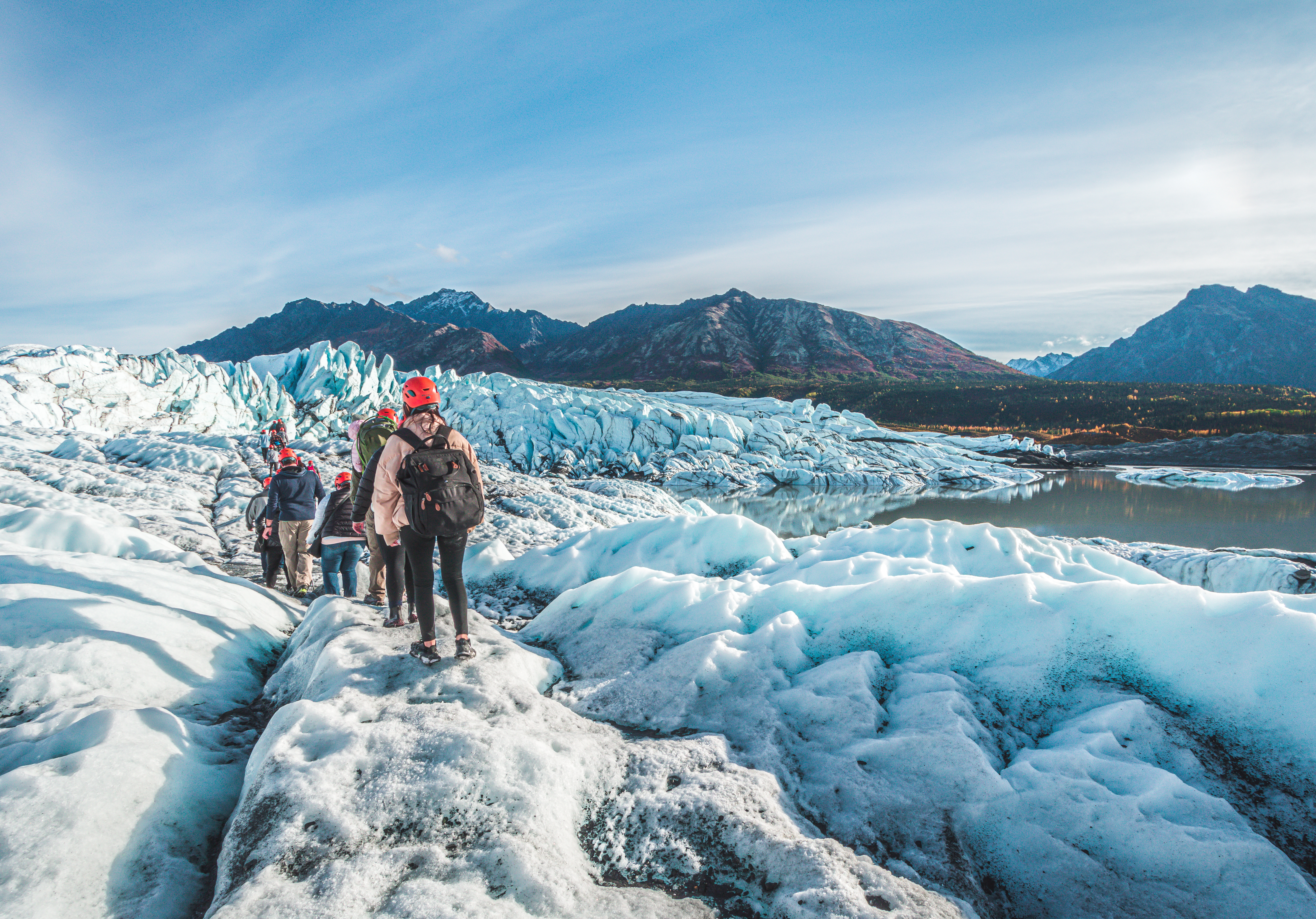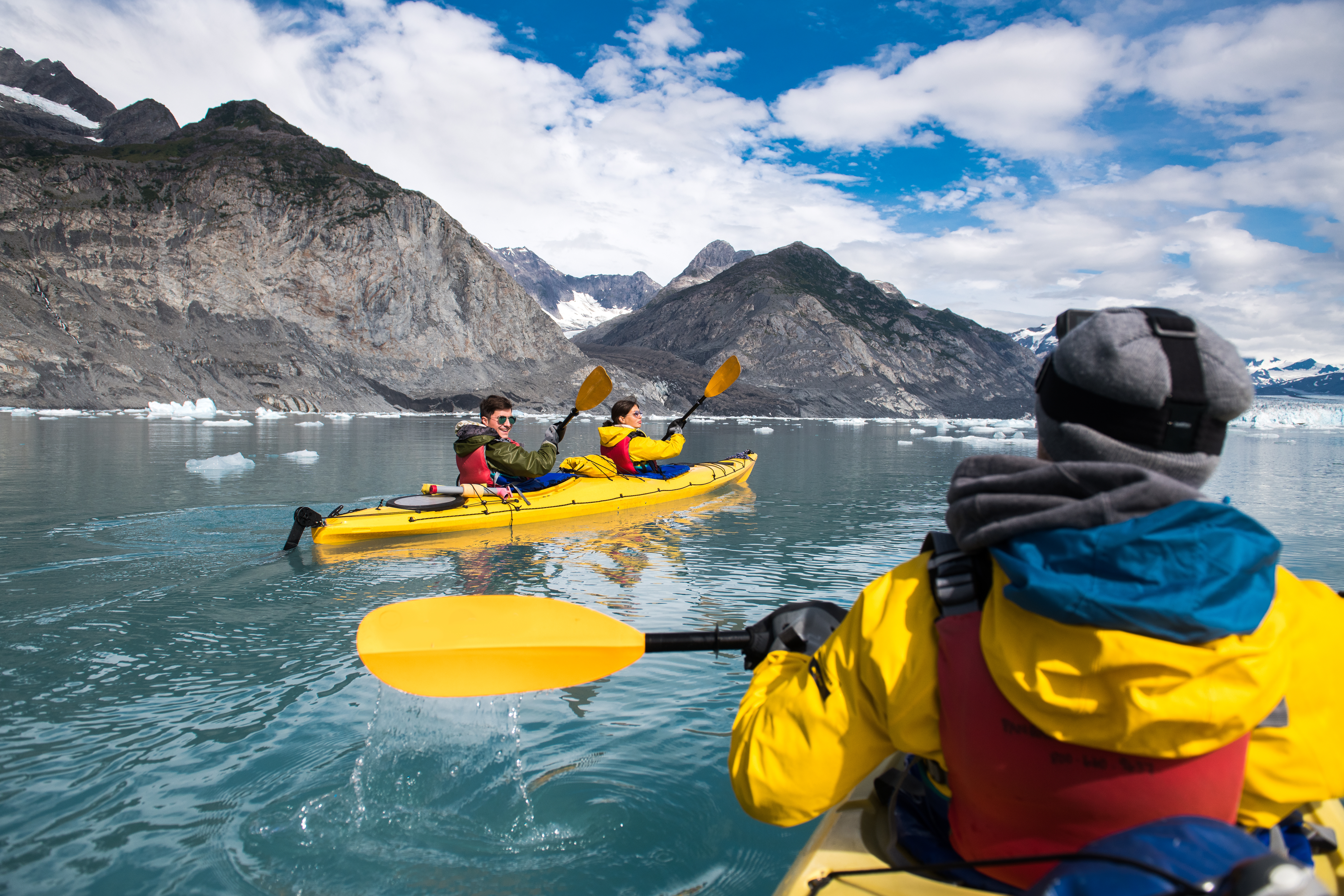Planning A Trip To Alaska
Alaska truly is America’s Last Frontier – a vast wilderness with ecosystems that range from a temperate Pacific rainforest to fjord-like coastlines to volcanic moonscapes to a spongy tundra to high-altitude alpine worlds.
Because there are so many Alaksas – and because the state is so huge and distant – planning a trip to Alaska can be more challenging than planning a trip anywhere else in the U.S.
Planning an Alaska vacation means taking into account how you’re getting there, how you plan to navigate the state’s vastness, and how many of the different Alaskas you want to explore.
Let’s break that down, starting by identifying the most popular Alaskas among travelers from the parts of the U.S. south of the state – a region known among Alaskans as the “lower 48.”

Coastal Alaska
One of the most popular ways for people to visit Alaska is by cruising the North Pacific coast from Washington or British Columbia up to Alaska.
This is the most popular cruise route in North America, and there are a variety of ways to do the cruise. You can:
- Cruise the Gulf of Alaska one-way, outside many of the islands along the shore
- Cruise round-trip inside the islands – the “Inland Passage”
- Take the ferry – the “Alaska Marine Highway”
- Do a mini-cruise out of an Alaskan port like Seward
The first three cruise types generally sail out of Seattle or Vancouver and stop at Skagway (non-essential), Ketchikan, Hanies, and/or Juneau (somewhat more essential). They also include lengthy stops at Glacier Bay National Park, with plenty of time to see fjords and other stunning coastal scenery.
The difference between going inside and outside the islands is that the gulf tour is one-way, meaning you’ll likely have to fly back from Anchorage to your port, and it’s slower, taking about the same time to get to Alaska as an Inland Passage tour does to go to Alaska and back.
On the other hand, a gulf tour gives you more time for train trips and other opportunities to explore inland Alaska.
The Alaska Marine Highway
The Alaska Marine Highway is an even slower go, since it makes many stops along its route from Bellingham to Haines or Whittier. It lacks many of the amenities offered by cruise ships, but if you want to see the “real Alaska,” it’s the way to go.
You can also hop on and off the ferry, if you feel like diving deeper into the interior.
However you get there, an Alaska cruise is incredibly scenic and the best way to see popular sights like glaciers. A cruise-train combo is highly recommended for the views it gives of wild interior Alaska, wildlife like dall sheep, and mountains like Denali.
If you’re already in Alaska, having driven up or flown in, taking a mini-cruise out of Seward, Whittier or Valdez is a no-brainer. It’s a relatively inexpensive way to see sights you won’t see anywhere else in the world.
Sportsperson’s Alaska
If you like to fish or hunt, there’s no place in the world like Alaska. The salmon and trout fishing is unparalleled, and the hunting expeditions provide all the sporting challenge you could ever want.
You can try to DIY it, but guided hunts and fishing lodges or camps are going to be your best bet. They’ll help you coordinate logistics and tell you what to bring.
Very often getting to where you need to go on these trips involves a flight on a bush plane (or two) with a landing on a small open patch or on water.
Many hunters and anglers consider flying with a bush pilot to be one of the highlights of their trip. It’s generally safe, but it won’t cure your fear of flying.
If you want just a taste of the Alaska fishing experience, take a day trip to fish either inland or coastal waters. Charters are available at most stops along the Inland Passage.
Travel Alaska has an extensive rundown on fishing in Alaska, while Alaska Fish and Game has the details on choosing a hunting guide, as well as hunting and fishing rules and regulations.
Adventurer’s Alaska
Per the State of Alaska, Alaska has more than 322 million acres of public lands, including:
- 15 national parks
- 16 national wildlife refuges
- Two national forests
- One wild river
- 120 state parks
That’s a lot of area to get lost in … which is both a good and bad thing, as we’ll discuss later.
The national parks alone illustrate the panoply of adventures available to Alaskan travelers. Some of the highlights include:
- Denali: The quintessential Alaskan national park built around America’s tallest peak
- Gates Of The Arctic: Vast, untouched wilderness only divided by mountains, valleys and cold-rushing rivers
- Katmai: A volcanic landscape that’s home to grizzly bears, salmon, and more
- Kenai Fjords: Rocky, deeply forested cliffs and snow-capped mountains that terminate in glacier-blue bays
- Kobuk Valley: Caribou migrating over sand dunes (!)
Many of Alaska’s national parks are not only far off the beaten trail, they’re far off the trail that leads off the beaten trail. (For instance, Gates of the Arctic’s nearest settlement is Bettles, which is not exactly known for its amenities.)
On the other hand, if you want true wilderness, nowhere else in the United States will satisfy that need like Alaska’s national parks.
About the wilderness
Speaking of wilderness, one very large disclaimer: Alaska’s wilderness is wild, like you’ve never experienced. This ain’t Survivor; this is the real deal.
You can’t rely on your cell phone having service; if you get lost or hurt, you can’t rely on someone coming to rescue you.
Living off the land is a sketchy proposition. You’re not going to subsist on salmon and blueberries like the bears do.
If you plan on trekking into Alaska’s wilderness, you need to do some extremely thorough prep and take some major precautions, such as:
- Pre-planning your route carefully
- Hiring a guide
- Traveling in a group
- Consulting with park staff and other local experts
- Carrying a map
- Carrying survival gear
- Carrying a firearm and/or fishing gear
- Letting people know where you plan to be each day of your journey
Wild Alaska must be respected; it’s nothing to mess with. But the rewards for explorers are often worth far more than the effort expended.

Roadtripper’s Alaska
Considering its size, Alaska doesn’t have a lot of roads. In fact, Alaska’s DOT calls its highway system “minimal.”
However, the state does have the Alaska Highway, the main artery connecting Alaska with Western Canada and the Lower 48.
The Alaska Highway
From the ‘50s through the ‘70s the Alaska Highway was the biggest challenge American motorists could take on – a partly (and badly) paved strip of concrete, asphalt and gravel that traversed mountain passes and swampy, scrub-pine nothingness, with amenities of varying quality scattered along its way-too-long route.
If you drove the Alaska Highway in those days you had to budget for a new windshield, a new radiator, and tire chains. It was that kind of road.
Today the Alaska Highway is all paved and has made major strides in the amenities department, but it’s still a challenging drive, whether you’re in an RV dodging semi-trucks or in an SUV dodging RVs.
It’s a 40-hour drive from Montana to Fairbanks, Alaska; give yourself five days to a week.
Driving the Alaska Highway isn’t for everyone, but it’s like a lot of things with Alaska: If you take on the challenge you’ll be rewarded.
Other roads
If the Alaska Highway is a little too much road-trip for your taste, the 366-mile Richardson Highway from Valdez to Fairbanks is a great trip. It also connects with the Glenn Highway to take you into Anchorage.
Metropolitan Alaska
Anchorage is a great city. It’s beautiful, it’s easy to get around, there are some fine restaurants, and it has every kind of outdoor activity you could want within a short drive.
Is it dark and damp in the winter? Absolutely – but residents have a wide range of coping mechanisms to deal with the lack of sunlight. (And you probably won’t be visiting in the winter anyway.)
You could do worse than spend a day or two in Anchorage as part of your Alaska vacation. It’s particularly beautiful in mid-summer, when it seems like every home and street corner is festooned with the biggest, most colorful flowers imaginable.
If you visit then, choose a room with blackout curtains or be prepared to stay up. All-day daylight is a thing, and it’ll throw you.
Bringing it full-circle: planning a trip to Alaska
Now that you know something about the different Alaskas, choose:
- When you want to go: Alaska doesn’t have shoulder seasons. It goes from summer to fall to winter in a flash. If cold weather isn’t your thing, visit in summer.
- How you want to get there: Ships will get you to ports where you can take a train or rent a car and explore the interior. Driving is all interior. If you fly to Anchorage, you’ll likely rent a car and drive to the coast or the Kenai Peninsula, unless you hop a bush plane to a fishing camp.
- What you want to do: Active outdoor sports are a big part of the Alaska experience. If you don’t care to hike, camp, kayak, mountain-bike, ski, or fish, a cruise is a good option.
- How long you want to stay: You could literally spend months exploring Alaska, but for most travelers a week is plenty.
- How guided you want your trip to be: You can take a cruise and a train tour and see a lot of Alaska without venturing out on your own – or you can grab your backpack, get off the train in the true middle of nowhere, and vanish into the bush. It’s your call.
Alaska defies description. The only way to truly understand it is to visit. And once you visit … you’re hooked.
Regardless of the Alaska trip you choose, travel insurance can give you the peace of mind you need to venture fearlessly through the Last Frontier.
Berkshire Hathaway Travel Protection’s plans cover everything from cruises to road trips, and getting a quote is quick and easy. See for yourself.
Questions About Travel Insurance?
Check out our online guide, "What Is Travel Insurance All About?" We've provided in-depth answers to all your travel insurance questions, starting with the basics.
